Mike Manley Hits the Ground Running As Storm Clouds Gather Over FCA
Former Jeep and Ram boss Mike Manley was a top choice among the candidates competing to succeed Sergio Marchionne, but no one could have expected his ascension to the CEO’s chair would occur in such a sudden, tragic manner.
During his first earning call, Manley was forced to address not just his predecessor’s death — which occurred mere hours before investors, analysts, and journalists picked up the phone — but also the automaker’s slipping grasp on the Chinese market. FCA’s revenue and net income took a haircut in the second quarter of 2018. The company’s share price plunged in the wake of news of Marchionne’s death. And, last but not least, there’s tariffs flying left and right, cutting into the automaker’s earnings — indeed, the company has already readjusted its earnings forecast downward.
Some first week on the job.
Pony Car Check-up: If Only Our Lives Were As Stable As the Dodge Challenger's Sales
What’s something that’s really, really old, yet continues to attract a steady flow of buyers year after year? You could say the Colt 1911 and its knock-offs, and you’d be right — in fact, an old American pistol that packs a punch and never really saw the need to improve in a major way seems like an apt comparison to what we’re actually talking about.
When it first appeared on sales charts in May of 2008, the Dodge Challenger was pure throwback. A cherry to place on top of the brash, retro sundae Chrysler had constructed out of its 300 and Charger sedans. In case you missed it, last month was the 10-year anniversary of the reborn Challenger’s first full month of American sales; the TTAC crew deferred its celebrations until July 4th.
Taking a look at the sales performance of its domestic, um, challengers, it seems like the two-door Dodge might outlive us all. Will the last American passenger car on the market ride into the sunset with a supercharged roar and two smoking rear tires?
Acura's Redesigned RDX Did Exactly What the Brand Wanted It to Do
Acura would love it if we talked about the brand in the same manner that we did, oh, say a decade ago. Maybe the turn of the century. But we don’t, as vehicles like the second-generation NSX simply didn’t capture our imagination like the original. There’s no cheap, fun little car like the Integra anymore, and cars as a whole are vanishing from conversations as quickly as they fade from sales sheets.
Sales of Acura cars in the U.S. fell over 25 percent in June, year over year, and volume over the first half of 2018 was down 6.5 percent. That leaves Acura’s utility vehicles with the job of counteracting the loss — a difficult task for just two models.
For the freshest model in Acura’s stable — the totally revamped 2019 RDX compact crossover — June returned the news Acura execs were hoping for.
More Power Awaits Buyers of the Long-range Nissan Leaf
Many years ago, back when full-on electric cars were rare oddities, I drove an early first-generation Nissan Leaf in power-sapping Eco mode. It was, to this day, the slowest vehicle I have ever driven. The driver of a 1980s Tercel with a three-speed automatic could have handed me my ass in a stoplight drag race.
That was then, and this is now. The second-gen Leaf, which bowed for 2018, offers buyers 142 horsepower and a generous helping of low-end electric grunt to go with their 151 miles of range. But there’s another beast arriving for 2019 that should satisfy those looking for more miles and more horses.
Shocked? Ford's F-Series on Track for a Record Year
Future archeologists will recognize this period in man’s history by the thick layer of Ford F-150s covering the entire planet, pointing to an era where one vehicle could seemingly do no wrong.
As the world’s best-selling vehicle line for what seems like forever, the F-Series’ sales performance over the first half of 2018 points to an impending record for the hard-working and increasingly plush lineup. Ford can be expected to push for it.
The Best Ford Focus Sedan Is the One (Almost) No One Wants
Think back to the very early days of the previous decade and memories of awful mainstream rock compete with visions of the first-generation Ford Focus sedan. It was everywhere, and quite a few people has quite a few problems with theirs. By the end of the decade, however, those issues were mainly in the rear-view, as Ford was busy preparing to heap dual-clutch transmission woes onto its customers.
Now, the Focus sedan’s officially dead as the Blue Oval embarks on a nearly car-free voyage to the future. Only the faux crossover “Active” version of the next-gen 2019 Focus stands to see any customers in North America, but it’s a privilege reserved only for citizens of the United States. Canucks need not apply.
Too bad, as the next-gen Focus sedan’s a looker. Its designers aren’t exactly thrilled that so many countries have taken a pass.
Genesis Hits the Partial Reset Button As It Awaits 2019 Models
We told you yesterday of the hurdles facing the fledgling Genesis brand, a standalone luxury marque launched two years ago under the umbrella of Hyundai Motor Group. Currently, just two models reside in the Genesis stable — the midsize G80 and full-size G90, with the 3 Series-fighting G70 bowing later this year.
It’s been a slow, measured start for the brand, but a shifting strategy for its U.S. dealer network means these early days haven’t been easy ones. A Genesis spokesman tells us that the brand’s inventory is being whittled down ahead of the launch of the revamped network alongside fresh, 2019 model year vehicles. Just how many Genesis dealers will exist at that time is unknown.
Genesis Sales Slip for Sixth Straight Month As Upstart Brand Readies Another Sedan
The Genesis premium brand is a good idea cursed with unfortunate timing. Hyundai’s luxury arm launched just as U.S. passenger car sales gunned the throttles and pushed forward on the yoke.
Despite the glowing reviews, up-front value, and attractive looks enjoyed by both the G80 midsize sedan and G90 full-sizer, the American buying public has never been more averse to the thought of a sedan purchase. A two-sedan lineup in this environment? That’s collar-tugging stuff.
As the Genesis brand approaches its second birthday, U.S. sales have now slipped into three-digit territory for the first time in its brief history. And what’s that on the horizon? Oh, it’s another sedan.
World's Cheapest Stripper Bites the Dust; Disinterested Public Barely Mourns
While our Ace of Base series delights in revealing just how bargain basement a mainstream vehicle can get, none of those rides hold a candle to the spartan purgatory that was the Tata Nano.
Billed as the world’s cheapest car upon its release in 2008, the Indian-market four-door was tailor-made to lure that country’s growing market of would-be vehicle owners off motorcycles and into a car with two cylinders, 37 horsepower, and a rear hatch that didn’t open.
Not unexpectedly, the vehicle quickly developed a stigma.
Subaru's Short-term Plan? Invade the South, Capture Hearts
To think of the Subaru brand is to think of the misty Pacific Northwest, the shimmering peaks of the Rockies, or the pastoral farms and rolling hills of New England. This is Subaru Country — where farmer’s markets and mountain biking awaits.
Well, Subaru head office wants to put an end to regional popularity, rolling out a five-year plan that targets the American South in a bid to boost North American sales by 20 percent.
Mazda's New Engines Will Test Whether Buyers Can Still Stomach a 'Car'
Showroom visitors in June continued carrying Mazda in a positive sales direction, even as those same buyers continue to shy away from the brand’s car portfolio. Hold on — that’s not necessarily correct.
On a year-to-date basis, all of Mazda’s passenger cars sit in the red, but the sensuously styled Mazda 6 sedan, fresh from yet another, um, refresh (this one designed to push the model upmarket a bit) barely qualifies. Since the massaged 2018 model went on sale in April, year-over-year sales increases in that month, May, and June mean the model now posts only a 0.9 percent YTD sales decrease. Almost back in the black, for this year, anyways.
Despite it outward appearance staying nearly the same, the 2018 refresh brought a long-awaited turbocharged engine to the Mazda 6 line. As well, there’s upgraded powerplants destined for the two remaining cars in Mazda’s barn. Nothing sweetens the pot like extra power.
It'll Take More Than a Dealership Makeover to Propel Mitsubishi Upmarket
At the end of the day, brand perception comes down to product, but no one likes visiting a dingy dealership. As the once-endangered Mitsubishi awaits a slew of lucrative new products (crafted with Nissan’s help), it figures it may as well begin sprucing up its dealer presence — not just in the U.S., but worldwide.
While the automaker’s U.S. division sits back and basks in the glow of June’s 46.2 percent year-over-year sale increase, head office is busy planning 5,000 renovations.
As Sales Begin, the Nissan Kicks Will Be an Interesting Vehicle to Watch
Some of you might have read our first-drive review of the subcompact Nissan Kicks out of simple curiosity, knowing that the vehicle would never find its way into your driveway. And that’s fine.
For myself and others, the Kicks holds more interest simply because of what it is — a lightweight, unpretentious, fuel efficient addition to the crossover space with a very low starting price. Low enough to serve as an effective alternative to thrifty compact or subcompact car buyers. North of the border, that entry price ($17,998, eight bucks more than U.S. MSRP) is four grand less than a base, front-drive, three-cylinder Ford EcoSport. In the States, it’s two grand less.
With the front-drive-only Kicks now available in both countries, its sales performance will be interesting to watch. Actually, it already is.
As the Chevrolet Bolt's U.S. Sales Cool Off, GM Readies a Production Boost
As promised by General Motors CEO Mary Barra in March, GM plans to crank out additional Chevrolet Bolts at its Orion Assembly Plant in Michigan later this year. The need for extra output isn’t because of rising sales in the United States, however.
In GM’s second-quarter 2018 sales report, the Bolt’s U.S. tally fell to 3,483 vehicles, down from Q1’s 4,375 deliveries, as well as Q2 2017’s 4,500 units. Last year’s Q2 sales came when the Bolt hadn’t even reached all U.S. markets. No, GM needs more Bolts because other countries want them.
Chrysler, Dodge Brands' Hazy Future Doesn't Worry Union Boss
For two brands steeped in Americana, Chrysler and Dodge sure seem to love Canada. Two Ontario plants continue cranking out Grand Caravans, Challengers, Chargers, 300s, and Pacificas, even as the 9,600-strong workforce in Windsor and Brampton grow leery of the future.
It’s not just the complete lack of interest Fiat Chrysler displayed in those particular brands during last month’s five-year plan unveiling; it’s also the threat of import tariffs on foreign-made vehicles that could very well sink across-the-border manufacturing.
Nah, it’s all good, says Jerry Diaz, president of the union representing Detroit Three autoworkers in the Great White North.
June 2018 U.S. Auto Sales: Y'all Like Trucks - A Lot
A sea of green greets execs at major automakers this morning, providing a feeling of relief not unlike that of a weary travelling viewing the flight board at JFK where all flights read “On Time.” Come to think of it, that example is surely one of fiction. Anyway…
Unsurprisingly, light trucks and SUVs are the main reason for industry gains, driven by insatiable consumer thirst for tall wagons and vehicles with a pickup bed. This is a familiar refrain in an industry that is up nearly two percent so far this year.
Just How Bad Are Car Sales Going to Get?
As the industry stresses about the new vehicle market taking it easy for the foreseeable future, there’s one aspect of it that’s of particular concern: car sales. After dominating the field for so long, passenger car sales fell below half of the market just a few years ago. That gap continued to widen through 2018.
Automakers responded by shifting output towards utility vehicles and crossovers. Ford ultimately decided to abandon the majority of its passenger cars in the United States as other manufacturers scramble to adjust their lineup to account for consumer tastes. However, these changes are also helping to push shoppers further away from cars. Bank of America Merrill Lynch estimates that 71 percent of vehicle introductions for the 2019 through 2022 model years will be light trucks.
Some automakers still believe cars hold an importance that’s not to be ignored. True, some models still sell incredibly well. But the general assumption is that they’ll continue losing relevance in the coming years. It’s likely to take another energy crisis or major shift in consumer preference to turn back the tide of crossover vehicles.
Can We Interest You in a Cruze? GM Claims Ford/FCA's Loss Is It's Gain
It’s gotten to the point where those seen buying a traditional sedan or hatchback are viewed as being unlikely candidates for procreation. After all, you can’t raise a kid in the absence of a vehicle belonging to a segment where “rows” matters more than horsepower or fuel economy. I blame Lee Iacocca for sparking the non-car trend.
Anyway, with Fiat Chrysler out of the small and medium-sized car game, and Ford eager to follow, General Motors feels this new automotive landscape could work to its advantage. Never mind all that doom and gloom (and some very GM-centric rumors).
Despite Saying 'No' to a (New) New Beetle, Volkswagen Hasn't Completely Closed the Door on the Idea
Last March, Volkswagen confirmed that once the current-generation Beetle runs its course, there won’t be another. It was thought — and hoped, for some VW execs — that the automaker would switch the iconic model to electric drive, thus keeping the brand’s heritage alive while at the same time fulfilling its promise to unleash scores of EVs into the marketplace.
Not so, it seems. “Two or three generations [of Beetle] is enough now,” said VW R&D chief Frank Welsch in an interview with Autocar. “You can’t do it five times and have a ‘New New New Beetle.’”
Well, that was spring, and this is summer. Apparently, VW hasn’t completely ruled out the return of the people’s car. Should the model stage a reappearance, however, prepare yourself for some sacrilegious changes.
Room at the Bottom: Volvo Crafts a New Entry-level XC60
Few will disagree that the second-generation Volvo XC60 crossover, which debuted for the 2018 model year, is a handsome vehicle. The midsizer adopts many of the styling decisions bestowed upon its larger XC90 brother, and that’s a good thing. Still, despite its smaller footprint, the XC60 remains a premium vehicle with a premium price.
For 2019, however, the entry-level XC60 sheds both content and price.
Is the New Honda Insight the Perfect Honda Hybrid Two Decades Too Late?
Attractive. Well received. A winner on paper. Technologically advanced. Badged with a logo that keeps producing record sales numbers.
One would assume that this is all that’s needed for the Honda Insight to be a raging marketplace success, at least in 1999.
1999 this is most certainly not, which highlights one glaring problem: the 2019 Insight is an attractive, well-received, impressive-on-paper, technologically-advanced Honda sedan.
Sedan. Sedan? Yes, sedan.
Volvo Puts Pedal Down to Bring Next-generation, All-American Volvo XC90 to Market
The Chinese-owned Swedish brand’s first U.S. assembly plant, which is about to launch into production of the next-generation S60 sedan, will gain a second exclusive product in the form of the next-gen XC90.
As the priciest vehicle bearing a Volvo Cars badge, the XC90 remains a huge part of the brand’s — presence and profits — in the United States. And, when sole production of the model comes to the Southeast factory in just three years, workers will be tasked with building a model capable of Level 4 autonomy and all-electric driving. It’ll be a challenge, Volvo’s CEO says, but it’s necessary.
Wagons Ho! What's Going on With the Station Wagon/Shooting Brake/Estate Car Market?
Ugh, you say. Wagons. A painfully uncool body type you swore off during childhood and haven’t reneged on since. A body type drooled over and feted by journalists who never put their meagre income where their mouth is. Yes, wagons. They remain part of our our automotive landscape, just a vanishingly small part of it.
But who’s buying them, and where? We have the answers.
Subaru Crosstrek Prices Rise Just a Tad for 2019 (As Sales Leave Earth's Atmosphere)
In a repeat of last year, Subaru of America plans to inflate the price of its 2019 Crosstrek models by a dollar figure that’s small and manageable. Wouldn’t want those buyers to feel used, and with good reason. As the automaker rolls out MSRPs for next year’s physically unchanged models, it’s enjoying record sales for the lifted all-wheel-drive hatchback crossover.
By placing its Impreza five-door hatch in the time machine and pressing the “AMC Eagle” button, Subaru turned what many first saw as just an interesting alternative and turned it into a juggernaut. Colourful pie charts await.
Volkswagen Tiguan Limited Will Soon Become Volkswagen Tiguan Unavailable
If you’re in the market for a very small (for its class) German crossover that demands premium fuel, you’ll soon be out of luck. Volkswagen says the Tiguan Limited — the old model kept in production alongside the newer, much larger Tiguan — will not return for the 2019 model year.
Instead, buyers who can’t go without a Tiguan badge on their vehicle will have to come to grips with knowing they’ll need to spend just over two grand more to satisfy their urge. Alas, we all knew it couldn’t last long.
America's Favorite Sedan to Take a Boat Trip
The Toyota Camry holds the remarkable distinction of being a midsize sedan with U.S. sales that actually increased over the first five months of 2018. Impossible, you say. It can’t be. You’d trade your kids for a crossover, but wouldn’t stoop to pick up a “free sedan” voucher if you passed one on the sidewalk.
Well, it’s true. Year to date, Camry sales are up 2.1 percent in the United States. Last year’s introduction of an eight-generation midsizer seemed to halt the sedan’s sales decline, though we’d be fools to think it’s anything other than a temporary lift. Camry volume sunk 7.9 percent in May. June could send the model into the negative.
Toyota seems aware of this, too. Maybe that’s behind the decision to send the Camry somewhere it hasn’t been in years.
Spied: 2020 Hyundai Sonata, Looking Larger and Definitely Rounder
If sales stats tell us anything, it’s that Hyundai’s latest refresh of the Sonata sedan didn’t seem to resonate with buyers. Despite the addition of a large and aggressive new grille for the 2018 model year, complimented by a sharper rear deck and nicely canted taillights, Sonata sales — like that of so many other traditional passenger cars — continued a downward path. So much for fixing the styling issues of the previous refresh.
After hitting a high water mark of 230,605 vehicles sold in 2012, Sonata volume sunk to 131,803 units in 2017. Sales over the first five months of 2018 fell 33.8 percent.
Given the sales trajectory, it wouldn’t have been a surprise to see Hyundai drop the model after the current generation runs its course, but the automaker seems intent on generating as many sales as it can across the segment spectrum. Thanks to these spy shots from Las Vegas, it looks like there’s a new Sonata in our future.
Lincoln's Cash Cow Grows Hungrier
As we told you earlier this month, the full-size Lincoln Navigator SUV plays a much larger role in the brand’s fortunes than in years past. The nameplate now accounts for over 18 percent of Lincoln’s sales. Over the first five months of 2018, sales of the square-rigged luxomobile rose 85.8 percent, partially offsetting the loss of passenger car sales and topping up Ford’s coffers with the model’s generous MSRP.
Sales aren’t the only thing on the rise when it comes to the Navigator.
Don't Thank Cars for Mini's Sales Gain
In fact, you can’t thank any of Mini’s vehicles for the brand’s 3.9 percent year-to-date U.S. sales gain, as that figures comes with an asterisk.
Mini’s compact Countryman crossover gets glowing praise in Mini USA’s May sales report, and well it should. The crossover, enlarged for the 2017 model year, pulled in 1,691 sales last month. That’s slightly more than 40 percent of Mini’s total volume in the United States. The model’s sales rose more than 29 percent, year over year, but its year-to-date increase (a whopping 61.9 percent) hides an inconvenient truth. A little math reveals a troubling trend that places the brand’s future in question.
This in’t an unfamiliar place for Mini.
Incentives, Old Model Keep Interest in Ram 1500 Alive as Fuel-sipper V6 Remains in Hiding
What happens when you launch your first all-new full-size pickup in a decade with only one of the three planned engines ready to go? Fiat Chrysler’s finding out with its 2019 Ram 1500, which entered production at the dawn of the new year. Five months later, and there’s still no mild hybrid Pentastar V6 or similarly electrified 5.7-liter V8.
The 2019 model’s off the launch pad, but hasn’t cleared the tower. Thankfully for the brand, FCA saw fit to keep the older generation in production, satisfying buyers who like lower MSRPs and available six-cylinder powerplants. That doesn’t help would-be buyers who keep showing up at FCA dealers in search of a thrifty new Ram, however.
Even Europe Has No Use for a Range Rover Evoque Three-Door
The most attainable Range Rover, and easily the least desirable, will no longer be offered sans rear doors. While the five-door Evoque soldiers on for the 2019 model year alongside its ridiculous convertible sibling, the automaker says there will no longer be a three-door available anywhere on the planet.
It’s just the latest evidence that automakers aren’t interested in shelling out for seldom bought body styles just to satisfy a handful of nonconformist buyers.
2018 Nissan Altima SV Rental Review - Farewell, Thine Faithful Full-size
It seems like lately I’ve developed a habit of reviewing vehicles on the verge of being replaced by a brand new generation. And by habit, I mean one review. But it seemed fitting when the local Enterprise location handed me keys to a “Full Size” and it turned out to be the soon-to-depart, current-generation Nissan Altima.
With a new Altima already unveiled, promising more/better/faster everything, is there anything to miss about the outgoing model? After a week living with one, I can definitely say there might be.
Probably.
Ford EcoSport Continues Its Search for a Sales Ceiling
If the Ford EcoSport was Elon Musk, there’d be a special online site created to champion the tarring and feathering of the writers at this publication. While we’re in agreement that the subcompact crossover space is a much-needed segment for Ford, especially given its plan to ditch conventional passenger cars, we question the automaker’s decision to bring the EcoSport here.
One of our readers wasn’t too thrilled with his experience behind the wheel, but we’ll all reserve final judgement until after we spend a week in one. There’s further reviews on the way. (Maybe it’ll hack our lives and our emotions.)
Having said that, the EcoSport, which saw its first ever U.S. deliveries in January, sees its monthly sales continue to climb. Much to the chagrin of a certain PEI resident, it seems Americans have taken to the thing.
Image Makeover Won't Be Easy, Says Mitsubishi's North American Boss, but at Least People Are Buying Its Cars
Mitsubishi North America CEO Fred Diaz knows people think of his company as a purveyor of vehicles with a singular appeal: their affordability. The flip side of the coin is that people think the brand’s lineup is cheap, in the negative sense. Something must be done.
The regional boss of the automaker with the saddest Detroit auto show display knows that stigmas aren’t erased overnight. But he’s got ideas on how to turn things around. In the meantime, Americans are going out and purchasing ever greater numbers of the company’s cars. Especially last month.
As Lincoln Struggles to Regain Its Sales Footing, the Aviator Can't Arrive Fast Enough
May brought happier sales number for Ford Motor Company compared to the lackluster month that preceded it, though the same can’t be said for the Lincoln brand. Despite a 0.7 percent overall sales gain last month, Ford’s 1 percent year-over-year uptick in volume was countered by Lincoln’s 5.2 percent sales drop.
It’s the 11th consecutive month of year-over-year volume loss for the premium brand once described as “resurgent.” True, Lincoln’s sailing in far calmer waters that it was a decade ago (or even a handful of years back), but its engines seem to be set to slow astern. After achieving a post-recession sales peak of 111,724 vehicles in 2016, Lincoln’s sales slipped ever so slightly in 2017. It’s now down 13.4 percent over the first 5 months of 2018.
Lincoln’s upcoming Aviator can’t arrive soon enough.
May 2018 U.S. Auto Sales: FCA Is the House That Jeep Built
The American car market in May reflected several stereotypes, not the least of which being that Jeep is the engine that’s currently driving the FCA machine.
The picture as a whole? Well, it’s largely flat, with continued light truck demand seeming to offset dips in car sales.
Looks Like It's Business As Usual at Dodge
It’s Fiat Chrysler Friday, apparently. Updates continue to trickle out of Italy, where FCA CEO Sergio Marchionne was hounded by press following the unveiling of his company’s five-year product plan.
A plan, it should be noted, that completely ignored Chrysler, Fiat, and Dodge. With talk of the four important global brands out of the way, Marchionne opened up on the lesser divisions. So, what does the future hold for Dodge, the most ignored brand of the day? Not a hell of a lot, apparently.
Fiat Chrysler's 5-Year Plan: Back in the Black by June, Bullish on Jeep, Off-road Ram on the Way
The first part of Fiat Chrysler Automobiles’ five-year product plan has emerged at the automaker’s Balocco proving grounds near Turin, Italy, where company brass detailed the near future of four key brands: Jeep, Ram, Alfa Romeo, and Maserati.
Yes, no mention of Chrysler, Dodge, or Fiat. They’ll get to that later this morning (is there a bell tolling for one or more of those brands, at least in America? Stay tuned…)
What we know at this point is that the company has no plans to back away from its goal of dominating the globe with the Jeep brand. There’s more SUVs coming — plenty of them, and hybrids, too. For North American truck buyers, a dedicated off-road variant of its new Ram 1500 is assured, giving the Ford F-150 Raptor a run for its money. FCA would prefer accepting your cash in that segment.
Nissan Turning Down the Flow From North American Assembly Plants
A larger-than-average new vehicle inventory, compounded by a change in strategy and dismal April sales figures, means fewer vehicles leaving Nissan assembly plants in the United States and Mexico in the foreseeable future.
The automaker plans to cut production by as much as 20 percent in the hopes of firming up its bottom line.
2019 Subaru Crosstrek Plug-in: Heartbreak in Colorado, Rejoicing in Vermont
Specialty green models don’t normally end up in lots across the country, at least not initially, and the upcoming Subaru Crosstrek plug-in hybrid is no different.
The resurrected green variant of the wildly popular Crosstrek, which bit the dust following slow sales in 2016, appears late this year as a 2019 model, only this time with real all-electric range and a corresponding plug. It’s a model born of the automaker’s partnership with Toyota, and the Crosstrek PHEV borrows powertrain components from the plug-in Prius Prime. (Whether it’s a direct carryover remains to be seen.)
As your author noted on Twitter the other day, this model seems tailor made to become the darling of hip, achingly progressive enclaves everywhere. While that could one day be the case, four-fifths of U.S. states won’t see the model upon its roll-out.
Volvo Boss Predicts a Plug-in-filled Future, but Americans Don't Seem That Keen on the Brand's Largest Greenie
The second-generation Volvo XC90 announced the brand’s confident and triumphant return to the forefront of automotive discourse. With its parental troubles behind it, the 2015 model year XC90 arrived with dignified, upscale sheetmetal and served as a styling template for future models like the S90 and XC60.
It also heralded the brand’s move towards downsized powerplants assisted by electric motors.
The company’s CEO, Hakan Samuelsson, sees a not-too-distant future where plug-in hybrids make up a quarter of its sales — an attainable goal on a global scale, given China and Europe’s fondness for such models. In the United States, though, Volvo’s plug-in XC90 — lately, anyway — seems to be headed in the opposite sales direction as its plug-free model. Slightly odd, as plug-in hybrids are ascendent in America.
As New RDX Enters Production, Acura Needs a Segment Standout [UPDATED]
Often found in its larger, older sibling’s shadow, Acura’s compact RDX crossover can at least boast of being the brand’s best-selling vehicle. Over the first four months of 2018, Americans picked up 15,326 of the little crossovers, versus the MDX’s 13,909.
But with popularity comes responsibility. As production begins in Ohio on the next-generation RDX, Acura’s smallest crossover must overcome its own falling sales in order to help reverse the brand’s flagging fortunes.
Morgan Stanley Is Pretty Sure GM's Cars Will Soon Go the Way of Ford's
Given the automaker’s sales numbers, it’s not the wildest prediction. Investment bank Morgan Stanley sees General Motors’ American passenger car lineup — or most of it, anyway — disappearing in the near future.
The move would see GM adopt a similar product strategy as its Detroit Three rivals, with sedans relegated to overseas markets and focus placed firmly on the production of trucks, crossovers, and SUVs. Barring $4 or $5 gasoline, domestic buying habits make this prediction seem inevitable — and there’s already rumblings of an impending cull in the automaker’s stable.
Alfa Romeo Readying an SUV for the Nuclear Family: Report
We’re talking one of those 1950s Leave It To Beaver-type families, not those downsized 1980s-onward broods. Yes, the range-topping utility vehicle under development by Fiat Chrysler’s sporty Alfa Romeo division will likely boast three rows and seven seats, according to UK publication Autocar.
It’s far removed from the diminutive Alfas of yesteryear, such as the 2000 GT Veloce driven by the titular character in Shaft In Africa, but it’s necessary to seduce the space-hungry American market. It’s also just one of several new products expected to be announced by FCA boss Sergio Marchionne next month.
Toyota Wouldn't Dream of Ditching Passenger Cars, Has Fingers Crossed It Can Woo Ford Buyers
While fewer competing models in a given segment stands to benefit any automaker left in that realm, Toyota isn’t sure just how loyal Ford car owners are to the Blue Oval brand.
Behind the scenes, there’s surely much licking of chops, but Toyota Motor North America CEO Jim Lentz wasn’t forthcoming with conquest predictions when he talked with Automotive News TV this week. One thing was clear, however. Toyota will remain a full-line brand for the foreseeable future, and the automaker stands to field a more car-heavy product mix for some time to come. And it’s just fine with that.
If Only the Range Matched the Price: Honda's Clarity EV Leasing for $199 a Month
By that, we mean the figure “199,” not the overall cost of leasing. Moving on…
Honda’s only true EV, the Clarity Electric, began arriving at dealers in California and Oregon Thursday, completing a green trifecta that includes a plug-in hybrid variant and hydrogen fuel cell model. It also carries a lease price that undercuts its rivals by quite a bit.
While Clarity EV lessees stand to pay significantly less for their eco-conscious ride, both up front and on a monthly basis, they’d best familiarize themselves with the location of charging stations.
If and When French Cars Return to America, Thank Canada
Cross-border Agreement: Midsize Truck Buyers on Both Sides of the 49th Parallel Seem Equally Enamored With One Model
One country waves the stars and stripes; the other, a big, red maple leaf. One calls those rain catchment thingies gutters, the other (or at least parts of it) insists on calling them eavestroughs. The differences are vast.
Despite their cultural and regulatory peculiarities, both Americans and Canadians seem to agree that the Toyota Tacoma‘s sales should only ever go in an upward direction. So far this year, buyers on both sides of the border provided nearly identical sales growth for the midsize pickup.
It’s a good thing Toyota worked out its production constraints.
Two Large Front-drive Cars Buck the Sales Trend
April wasn’t a hot month for auto sales, what with two less selling days than the same period last year. Overall, the industry was down nearly 5 percent last month, with — in many cases — only the hottest-selling models, many of them recently revamped SUVs, posting a net gain.
April held some surprises, though, and one had to do with a pair of vehicles that should be on their way to the funeral home. That is, if all automakers acted on what they saw in the tea leaves. Certain automakers, Toyota and Kia among them, aren’t quite as eager to hop onto the all-crossovers-and-trucks bandwagon. Because of this, there’s still choice for someone looking for a large, front-wheel-drive sedan with plenty of content, but not luxury vehicle levels of it.
These people actually exist, albeit in ever smaller numbers. And these people apparently like what they see in two particular models.
Lexus Got What It Hoped for With the New LS - At Least for Now
Every large, traditional Toyota and Lexus sedan seems to have hit that point in its lifespan where drastic surgery is needed to keep up with the younger crowd. Were these staid sedans people, they’d be milling about in the seating area of a local plastic surgeon’s office.
The first model to bend to Toyota’s desire for large cars that ooze dignified luxury but are also kind of green (and maybe kind of sporty?) was the 2018 Lexus LS flagship, appearing last year with a new platform and racy sheetmetal. The Avalon and ES will soon follow suit.
By revamping its LS, Lexus hoped to jam the brakes on a sales plunge that began after the recession and only got worse from there. Still, the automaker knew it couldn’t turn back the clock completely. There was a very specific sales goal mentioned during the launch, and it looks like the new LS delivered. Almost perfectly, in fact.
U.S. Auto Sales Brand-by-Brand Results: April 2018 (a Best Guess Tally)
This marks the first full 30 days since General Motors deemed us slovenly journalists unworthy of a monthly sales report. We’ll live, of course, as estimates are a wonderful thing. To be fair, their move wasn’t entirely without precedent: the industry used to report sales on a 10-day cycle, then twenty, before finally settling on a monthly statement.
As for concrete numbers, all other OEMs are still providing them (for now). Given the sea of red in some corners, there are a few who probably wish they weren’t.
Doubled-up Production Leads Jeep Wrangler to Another Sales Record
If you didn’t pop into a Fiat Chrysler dealer last month to pick up a Jeep Wrangler, congratulations, you’re now a nonconformist.
April was the best-ever U.S. sales month for the go-anywhere model, but the cause had more to do with availability than Americans suddenly discovering their rugged side. With old and new models rolling off of two Toledo assembly lines, buyers found themselves spoiled for choice. (The JK model ceased production on April 27th).
How well did the Wrangler do last month? The model accounted for almost as many sales as the entire Acura and Infiniti brands combined.
VW Sees the Future … and It Contains Sedans
Plenty of digital ink was invested in Ford’s recent decision to let all their cars rot on the vine exit the small car and sedan market. If the company follows through on its plans, and we have little reason to believe it won’t, we will soon be living in a world absent of Fiestas, Foci, Fusions, and big-brother Taurus.
Other manufacturers *ahem, GM, ahem* will be watching this closely, now that both of its crosstown rivals have largely ditched their cars (recall that FCA deep-sixed the Dart, 200, et al not long ago).
VW is thinking differently, recently introducing a new Jetta and placing a reworked Passat in the pipeline. In an interview with the website Digital Trends, Volkswagen of America boss Hinrich Woebcken explained why.
The End of Ford Cars: What's in It for Us
Ford recently announced the elimination of the traditional car from its North American lineup. Within two or three model years, no four-door Ford will be available with a trunk. No Fusion, no Focus, no Fiesta, no Taurus. The demand-driven logic behind the decision is clear. Cars have declined from 35 percent of Ford sales as recently as 2012, to 23 percent last year.
The company does not report profitability by nameplate, but we can safely assume their declining contribution to net income has been even more dramatic. So Ford’s decision was predictable, if seemingly dispassionate. Less predictably, a relatively healthy automaker is executing a long-term strategic shift. In public. Before the market forced it to.
Herein lies the real story.
Lincoln Says It's 'Committed' to Sedans, but for How Long?
Man, how about that upcoming Lincoln Aviator? Pretty sharp-looking SUV, ain’t it? And then there’s the new Navigator. Kinda big, though, but the 2019 Nautilus should be just the ticket for the front-drive midsizer crowd.
Oh, right — we were talking about sedans. Lincoln loves ’em, apparently, and it’s not having any of this Ford’s-killing-all-the-cars talk.
Buy/Drive/Burn: 2018 High-end Luxury SUVs for Over $100,000
Obviously the B&B are all about brand-new imported luxury SUVs, as their great value, utility, and long-term prospective ownership costs put them in a class all their own.
Trolling opener aside, we’re going to talk about expensive SUVs today. Up for grabs are three contenders around the $140,000 price point, from Range Rover, Mercedes-Benz, and BMW.
Hilarious: Canadians Can't Even Buy a Focus Active Under Ford's New Plan
For a country that looks at its southern neighbor’s gasoline prices with lust and envy, you’d think small cars would make up a greater share of the vehicle mix. Well, they don’t. Canadians like their crossovers, pickups, and SUVs even more than Americans, and Ford’s future product lineup shows it.
It seems like just yesterday you could walk into a Ford dealer and check out a stingy and unsafe Aspire, before the hungry salesman upsold you on an Escort (or perhaps its sporty ZX2 sibling). Then there was the Contour, Taurus, and Crown Victoria to consider.
Those days are gone, and under Ford’s new truck-centric product plan, which ditches the Fiesta, Focus, Fusion, and Taurus, Canada won’t even get the crossover-ized Focus Active hatch. It’s a Mustang or nothing for small car lovers.
Apparently, we’ve made our bed and now need to lie in it.
Toyota Spending Money in the U.S. On a Conventional Passenger Car
Those fools — don’t they know the Corolla sold *just* 329,196 examples in the United States last year?
Alright, not everything has to be about Ford. But as the Blue Oval plans a retreat from the affordable passenger car market, other automakers stand to gain the company’s lost customers. Some of them, anyway. And Toyota seems to have no qualms about continuing to sell small, affordable cars that bring buyers into the showroom — so much so, that it’s spending $170 million to bring more jobs (and a new Corolla) to Mississippi.
In the context of this week’s news, the Corolla’s factory retooling and platform swap makes one marvel at what name recognition and a simple bodystyle can do for a model.
Fulminating Over Ford
Ford announced yesterday, via a filing with investors, that by 2020 there will only be two conventional cars (or gas-fueled cars, at least) in its lineup. Those models will be the venerable Mustang and the upcoming Focus Active.
I wrote our news hit on it, and in my rush to get it online, I perhaps wasn’t as in-depth with context as I could’ve been. I’d like to make up for that by digging more, both into the greater context of what’s a tectonic shift in product portfolio for a major, full-line automaker, and flesh out my thoughts on what it all means.
The Nissan Rogue Hybrid Has Not Disappeared
Nissan’s a big fan of mid-year updates to its vehicles, and last week we told you of the changes coming to the 2018.5 Nissan Rogue Sport. Mainly, more standard safety features and a corresponding uptick in the small crossover’s entry price.
That piece led to the discovery that the model’s larger sibling, the fast-selling Rogue, seemed to have lost its hybrid variant — a model quietly introduced for the 2017 model year. Nissan’s consumer website shows no trace of the gas-electric compact CUV. Meanwhile, a search of Cars.com shows only 11 new Nissan Rogue Hybrids on lots across America, all of them 2017 models.
What’s the deal?




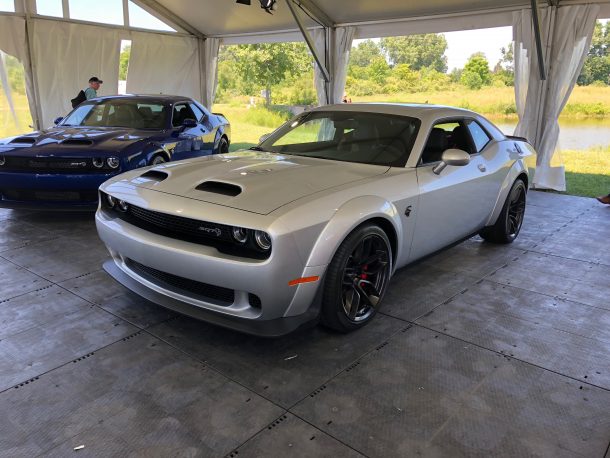


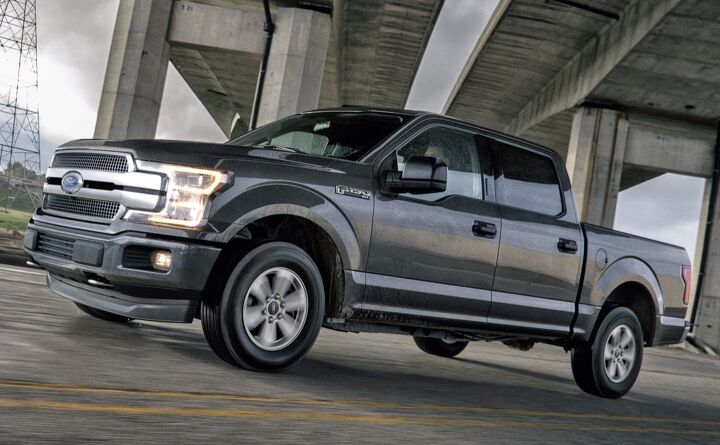




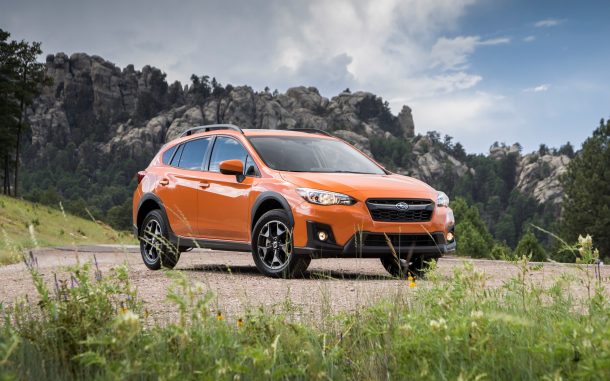

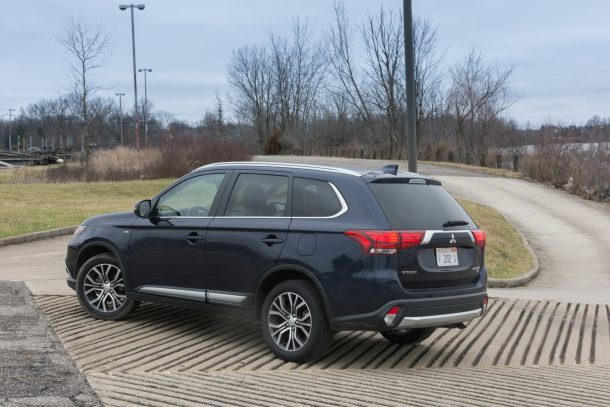








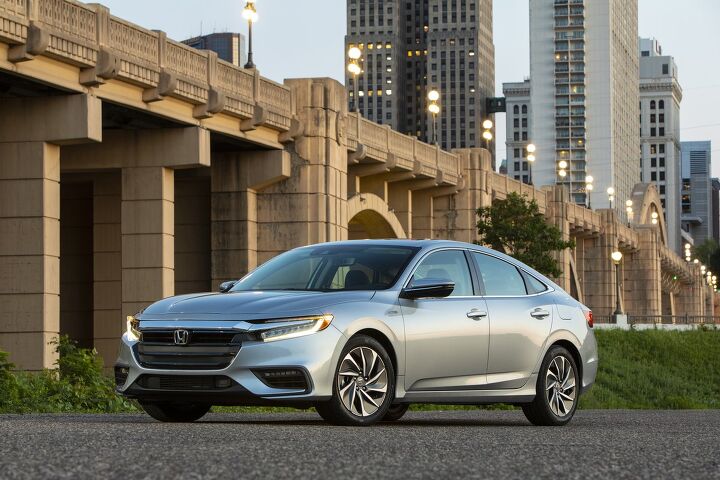
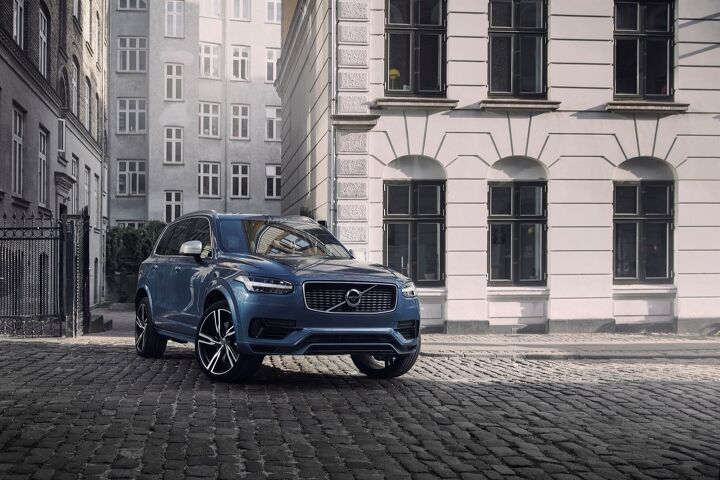
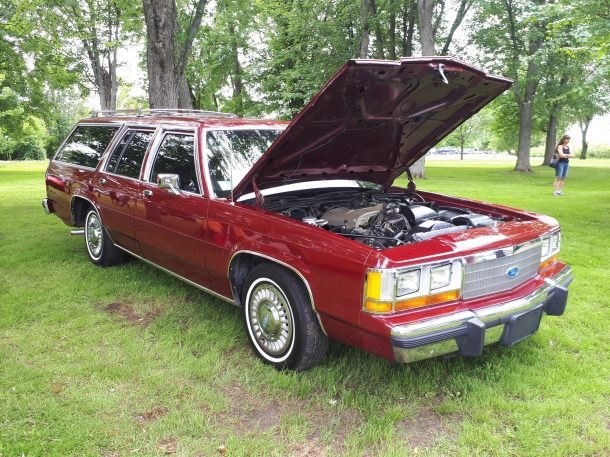
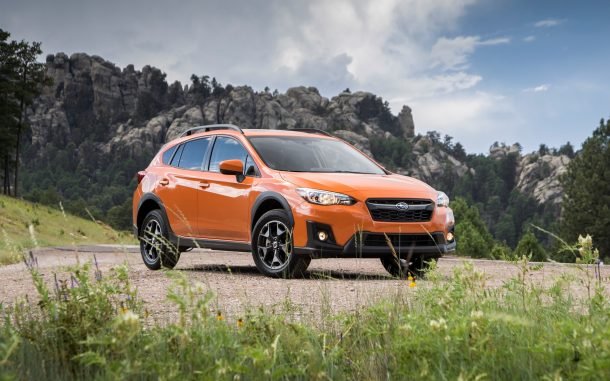
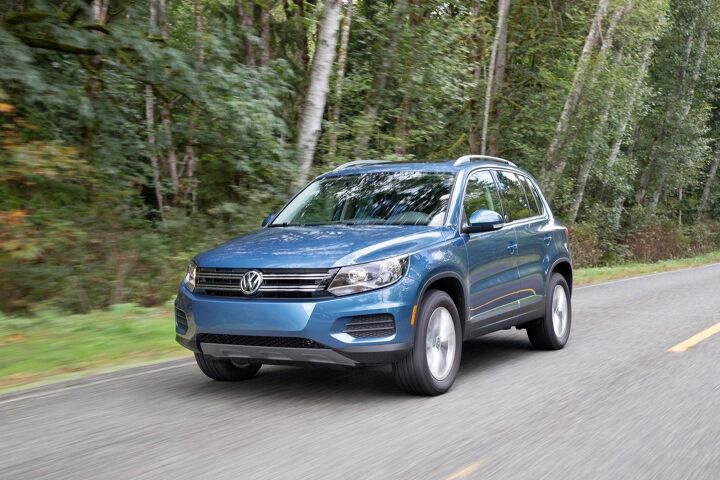
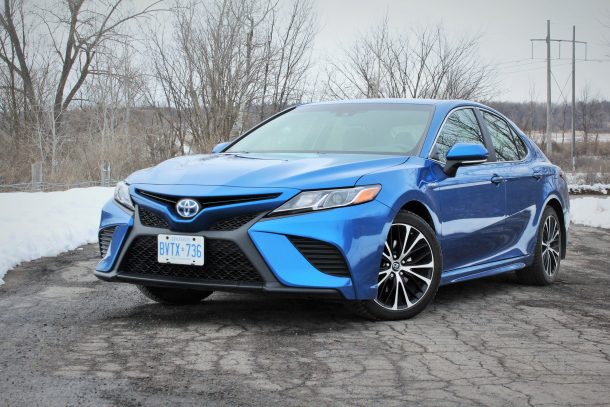

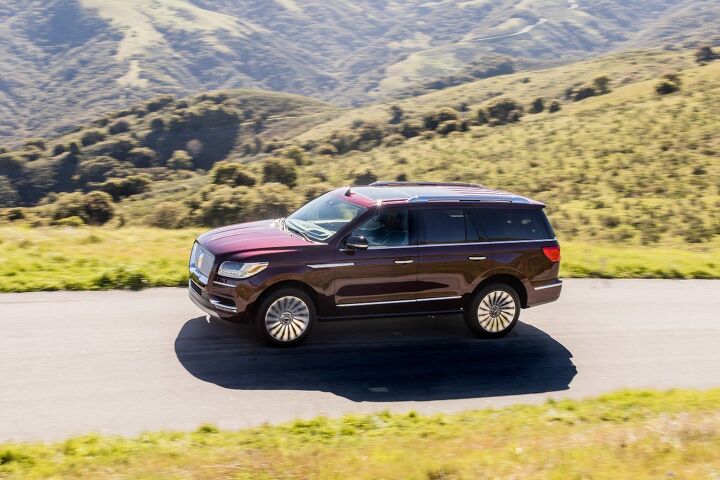
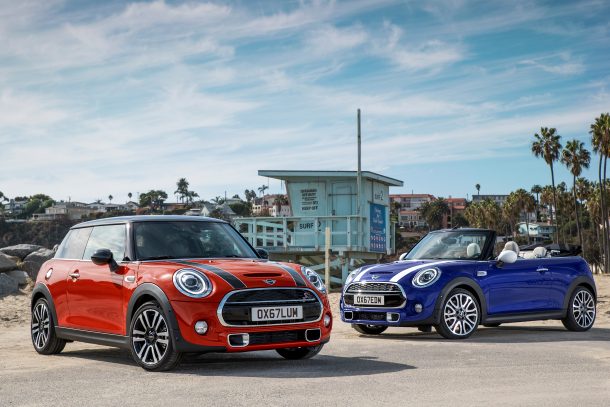


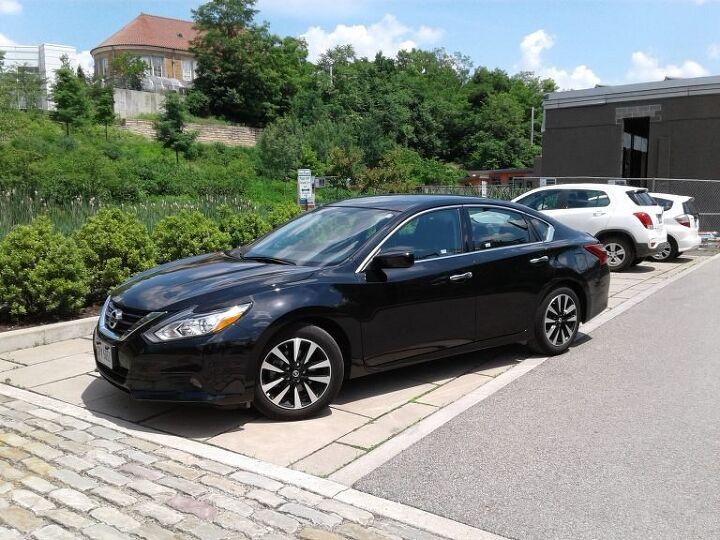
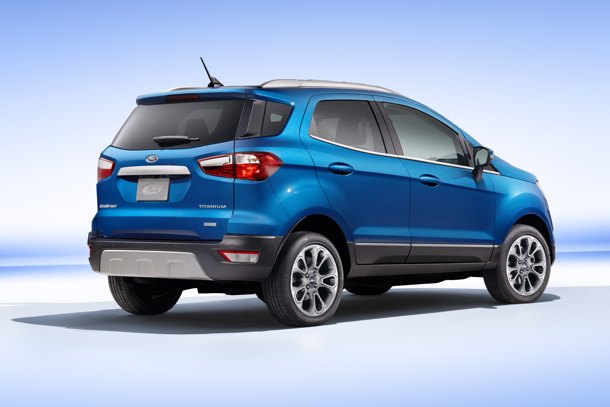



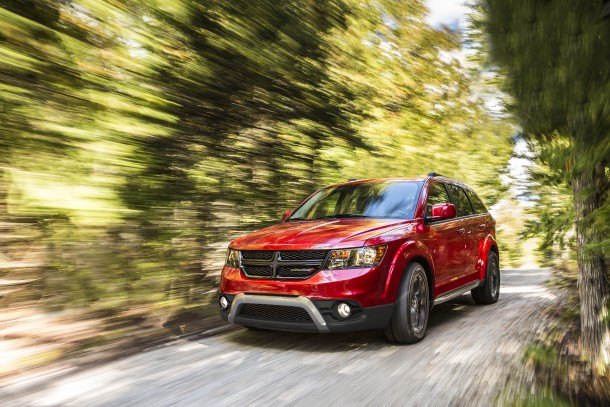
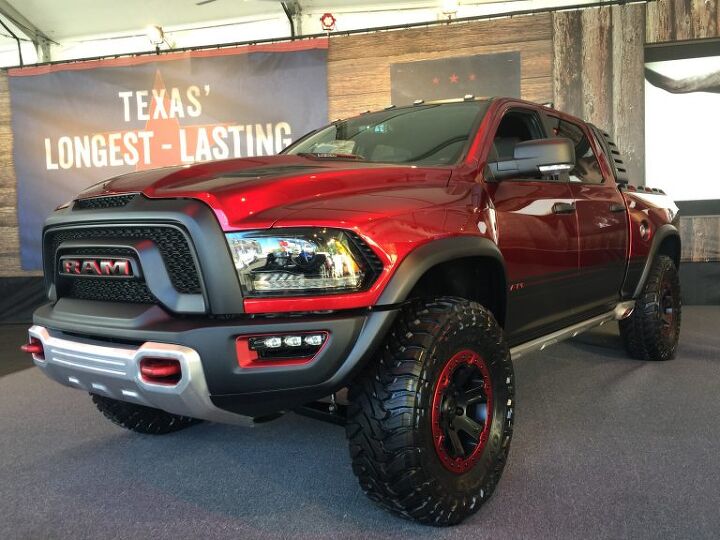

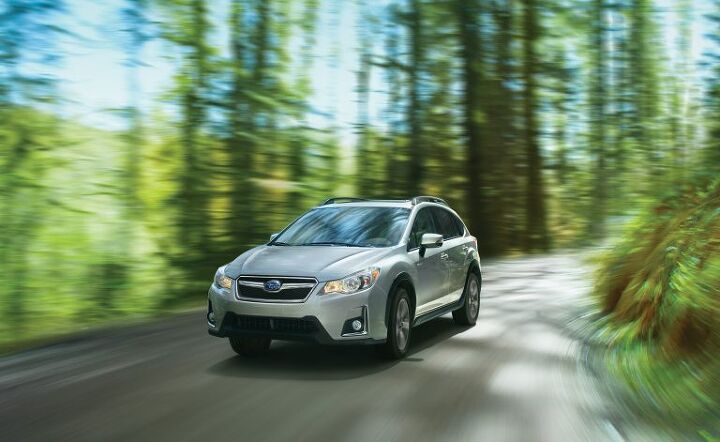

![As New RDX Enters Production, Acura Needs a Segment Standout [UPDATED]](https://cdn-fastly.thetruthaboutcars.com/media/2022/07/19/9194081/as-new-rdx-enters-production-acura-needs-a-segment-standout-updated.jpg?size=720x845&nocrop=1)
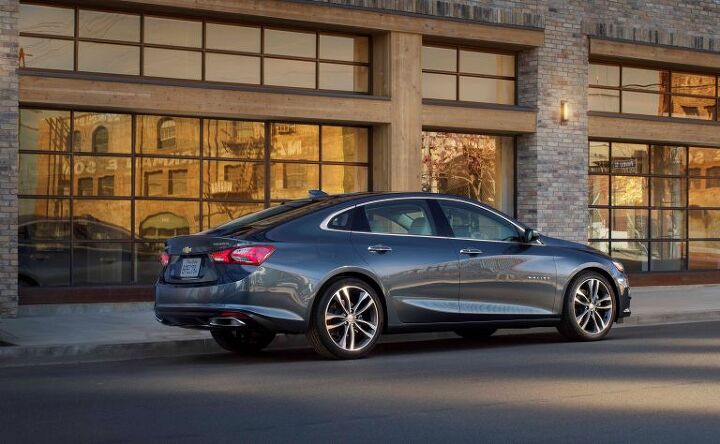

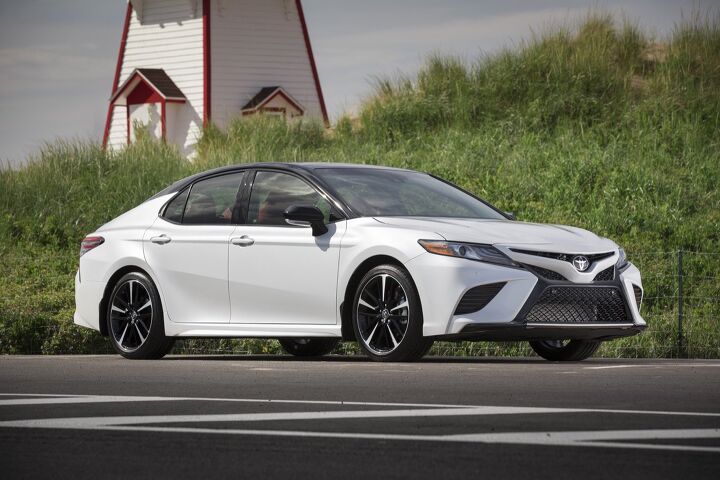
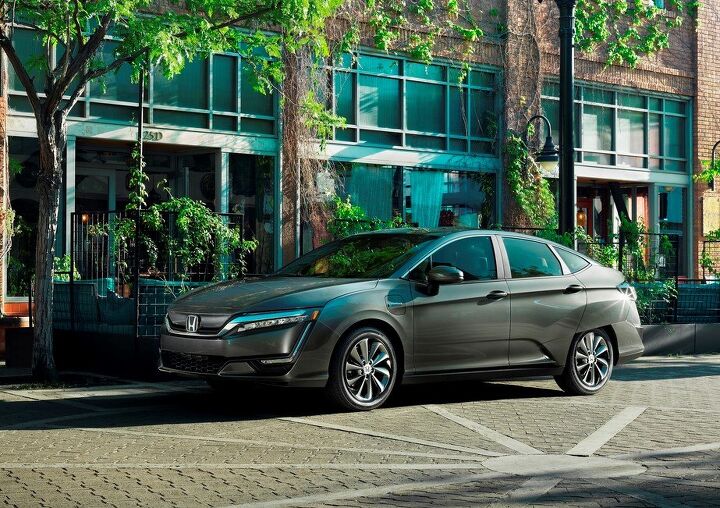


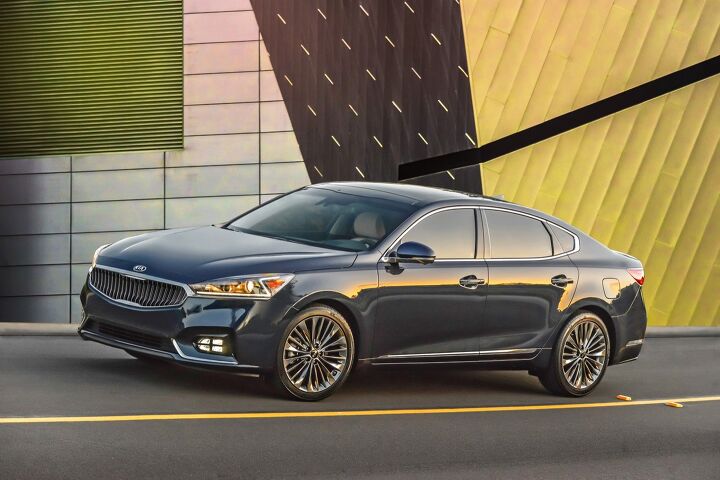


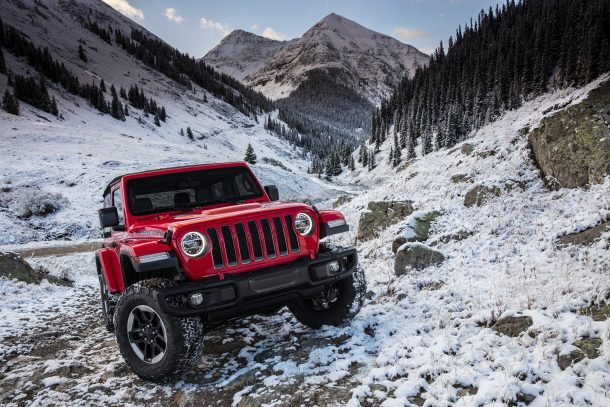
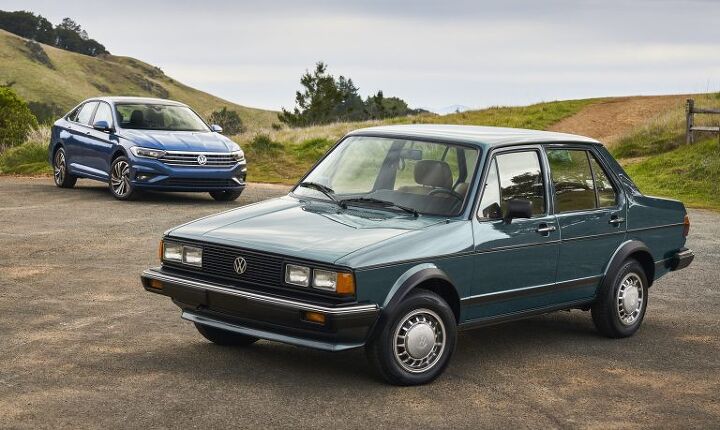
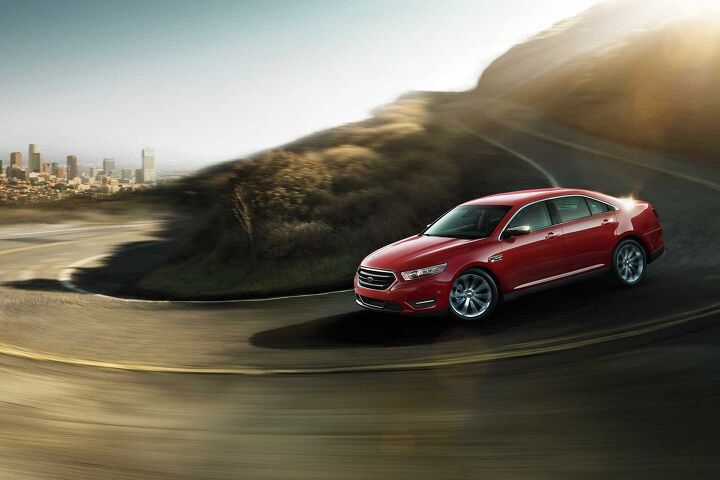


















Recent Comments